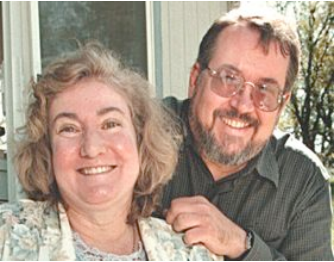Although the earliest girls’ aviation series were published in 1911 by Margaret Burnham and Edith Van Dyne (pseudonym of L. Frank Baum, who was also a strong advocate of women’s suffrage) to capitalize upon the popularity of flying series for boys, the “golden age” of these books began in 1930. Airplane Girl (four in the series) was first published in 1930 and was written by Edith Janice Craine, under the masculine pseudonym of Harrison Bardwell. Mildred Wirt, the ghost writer for the early Nancy Drews, wrote a five book series of a girl flyer, Ruth Darrow, from 1930 to 1931 published under her own name (much later, Mildred Wirt Benson went on to get a pilot’s license herself) . The Girl Flyers consisted of a two volume set written by Bess Moyer and published by Goldsmith in 1932. Twin girls, who didn’t even look like sisters, were the flying heroines; they were taught to fly by their father.
In 1933, Goldsmith released another series with a girl aviator, Dorothy Dixon, supposedly written by Dorothy Wayne, but probably authored by her husband, Noel Sainsbury. Although Dorothy is depicted in these books as a skilled pilot , the illustrator (and the publisher) apparently wanted to portray her as a helpless woman, so the dust jackets for all four books have the same illustration – a picture of her being rescued by a male aviator.
The earliest books in 1911-1912, which depicted girls on an equal footing with boys in terms of both piloting and owning their own planes were written several years before women even won the right to vote in the United States. It has been speculated that these series were rather abruptly ended because of several well-publicized deaths of “girl aviators” in 1912 – Susanne Bernard, (1892-1912) in France on Mar 10 1912, Julia Clark (1882-1912) on June 18, 1912 at Springfield IL, USA, and Harriet Quimby (1875-1912) on Jul 1, 1912 at Squantum, Massachusetts. Harriet Quimby, a journalist, had been the first American woman to earn a pilots’ licence (License #37 on August 1st 1911 sanctioned by the Federation Aeronautique Internationale and administered by the Aero Club of America), the first woman to fly across the English Channel and the first woman to fly a plane at night. She designed her own trademark flight suit, a purple satin outfit with a hood, which she wore whenever she flew. Julia Clark was one of only three licensed female pilots at the time of her own death and Suzanne Bernard was training to be a pilot.
All of these series, from the very earliest through the 1930s had an implicit progressive message – that the air was open to women as much as men. The 1932 book Polly Learns to Fly by Lillian Elizabeth Roy openly states this: just as girls can learn to drive a car, they can learn to pilot a plane.
However, as the world headed towards another war, there were some gradual changes in these books. In the boys’ aviation series, the heroes became involved in flying in the military – in the girls’ series, the heroines were demoted from pilots to stewardesses. Based upon the success of Nancy Drew and other mystery series, flying itself was no longer enough: the heroine also had to solve a mystery. The most popular of these later series, Vicki Barr, featured a young woman as a stewardess, although as the series progressed she became a licensed pilot.
Find Girls’ Aviation Series books


